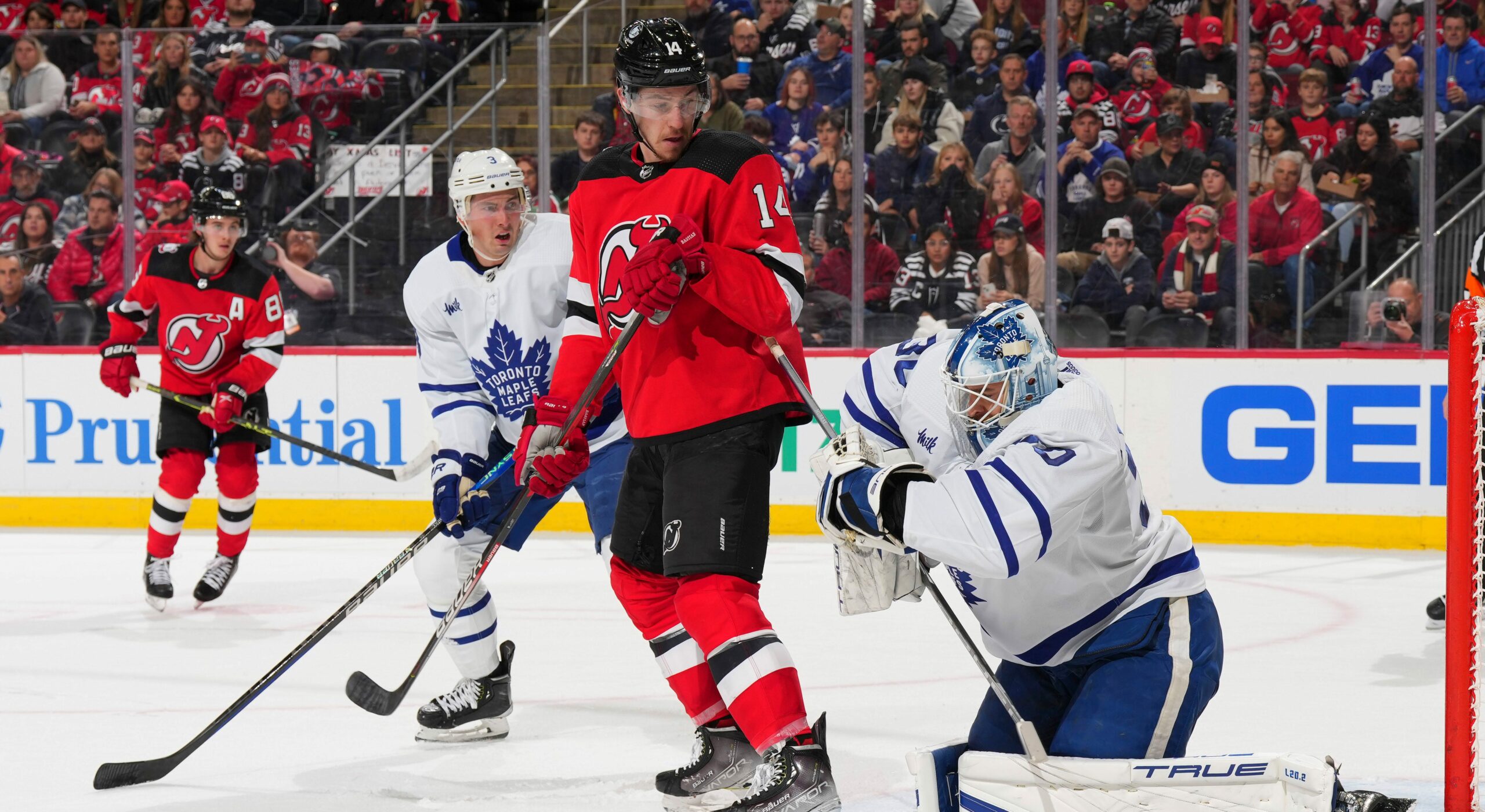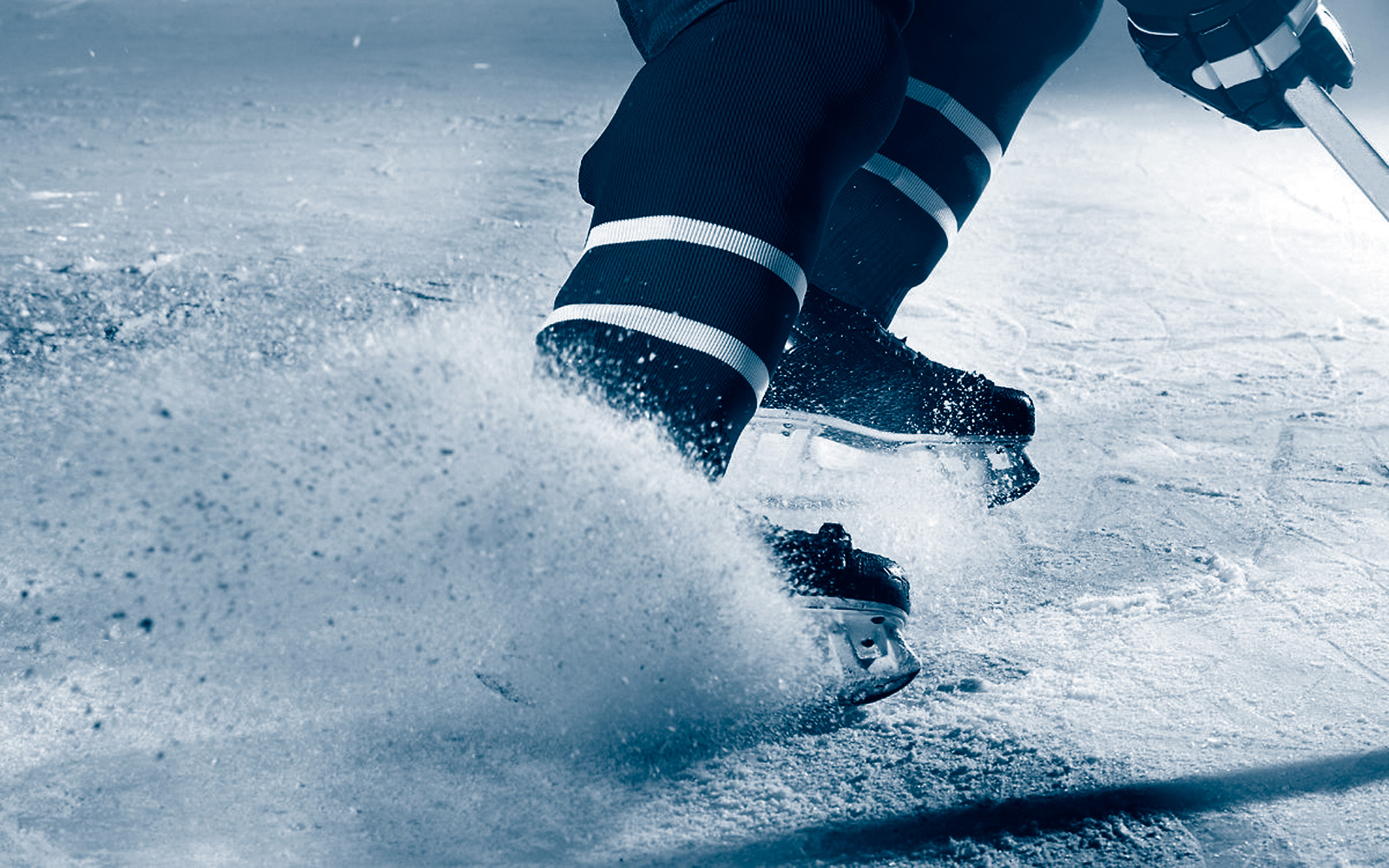What is a Saucer Pass in Hockey: Master the Elevating Move.
A saucer pass is a type of hockey pass where the puck is lifted off the ice, creating a curved trajectory through the air toward the intended recipient. The saucer pass is a popular move in hockey, commonly used to get the puck over an opponent’s stick or to avoid a blocked passing lane.
It requires precision and a good sense of timing, as well as skillful handling of the puck. Hockey players often use the saucer pass to initiate a breakout, set up a scoring opportunity, or make a quick transition from defense to offense.
In this article, we will discuss the different types of saucer passes, how to execute them effectively, and their role in the game of hockey.

Credit: www.wikihow.com
What Is A Saucer Pass In Hockey?
Hockey is an intense sport that requires quick reflexes, fast thinking, and precise execution. One move that separates great players from the rest is the saucer pass. In this blog post, we will master this elevating move and understand its significance in the game of hockey.
Define A Saucer Pass And How It Is Different From A Regular Pass
A saucer pass is a type of pass in hockey that lifts the puck off the ice, allowing it to travel smoothly and rapidly through the air. The player performing the pass slides their stick under the puck, lifting it while moving forward or sideways to create a floating trajectory towards the desired player.
A saucer pass is different from a regular pass due to the way the puck moves and the control it provides to the recipient. While a regular pass moves along the ice, a saucer pass elevates and glides toward the player, making it easier for the recipient to catch the puck without interruption and score during a game.
Explain The Benefits Of Using A Saucer Pass In A Game
The primary benefit of using a saucer pass in hockey is that it allows the puck to avoid the defense line. As the puck doesn’t touch the ice, the opponent’s defencemen will struggle to intercept it, hence making it an effective way to deliver the puck to an open teammate and increase the likelihood of scoring.
Some other benefits include:
- Provides greater control and accuracy over the puck’s trajectory, making it easier for players to control.
- Enables quick passing, especially over long distances, as the puck takes a direct and smooth path toward the recipient, bypassing defenders.
- Allows players to pass through tight gaps and sneak the puck through hard-to-reach areas.
Include Examples Of Nhl Players Who Use The Saucer Pass Regularly
Many skilled hockey players use the saucer pass as part of their gameplay, highlighting its importance. Some of the notable NHL players who use the saucer pass regularly include:
- Sidney Crosby
- Pavel Datsyuk
- Connor McDavid
- Mitch Marner
- Patrick Kane
- Tyler Seguin
Mastering the saucer pass in hockey can turn out to be a game-changer. Not only does it offer more control, accuracy, and speed, but it also improves a player’s puck-handling skills, making them a valuable asset to their team during matches.
With these techniques in mind, you can genuinely improve as a hockey player and impress your opponents with your exceptional moves.
Mastering The Saucer Pass
As any hockey player will tell you, passing is a critical skill to have. And if you want to take your passing game up a notch, then you need to add the saucer pass to your arsenal. The saucer pass is one of the most difficult passes to execute, but when done properly, it can elevate your game to the next level.
We will explain how to properly execute a saucer pass, provide tips for improving accuracy and distance, and compare and contrast the saucer pass to other types of passes in hockey.
Explain How To Properly Execute A Saucer Pass
Here are the key points to keep in mind when executing a saucer pass:
- Hold the stick with both hands, making sure the blade is flat on the ice.
- Look in the direction of your intended target.
- Slightly cup the puck with the blade of the stick and lift it off the ice.
- While keeping your eyes on your target, rapidly flick the blade of your stick upwards, so that the puck rises off the ice, spinning end-over-end.
- Follow through with your stick, pointing it in the direction of your intended target.
- Make sure the pass is aimed to land flat on the ice in front of the receiver.
Provide Tips For Improving Accuracy And Distance On Saucer Passes
Here are some tips to help you improve your saucer pass:
- Experiment with different angles and blade positions to find out what works best for you.
- Practice your wrist snap to improve the height and spin of the puck.
- Aim for a specific spot on the receiving player’s stick or blade for better accuracy.
- Practice passing over obstacles such as cones or sticks to improve distance and accuracy.
Compare And Contrast The Saucer Pass To Other Types Of Passes In Hockey
Here are some of the key differences between the saucer pass and other types of passes, such as the flip pass and the bank pass:
- The saucer pass is used for passing over a defender’s stick or for getting around traffic.
- The flip pass is used for lofting the puck over a long distance, such as clearing it out of the defensive zone.
- The bank pass is used for passing off the boards or the back of the net to a teammate.
- The saucer pass requires a significant amount of wrist strength and accuracy, making it one of the most difficult passes to execute.
Mastering the saucer pass is a skill that can take time to develop. But with dedication and practice, you can add this move to your repertoire and take your passing game to new heights. Keep in mind the key points of execution, practice to improve your accuracy and distance, and compare and contrast this pass to others in hockey to better understand its unique attributes.
Drills For Practicing Saucer Passes
Introduce Drills For Practicing Saucer Passes
Practicing saucer passes can be challenging, but mastering this elevating move can make all the difference in your game. The following drills will test your accuracy and distance, helping you to improve your saucer pass and elevate your game.
Elevate Your Saucer Pass Game With These Drills
- Off-ice practice: Start with practicing your saucer passes off the ice, ensuring your positioning and balance are just right.
- Two-person pass: Stand facing a partner, with a stick length distance between each other, and practice saucer passing just above their stick.
- Figure-eight drill: Set up two cones approximately eight meters apart. Then, move around them while saucer passing to yourself or a partner, improving your accuracy in tight spaces.
- Skip passes: Practicing skip passes is one of the best drills to increase your saucer pass accuracy. Make sure you focus on the direction, speed, and height of the puck while skipping it to your partner.
- Half-ice drill: Practice saucer passes while moving from red to blue lines, increasing the distance and accuracy of your pass.
Tips For Getting The Most Out Of These Drills
- Always focus on the good forehand, and backhand passing motions, and also on stick blade positioning to make solid contact with the puck.
- Practice these drills at least 3 – 4 times a week to hone your skills.
- Always remember to aim for the receiver’s blade and not their feet or higher than their shoulders.
- Use visual and mental cues like focusing on a specific object or thinking about the trajectory of the puck when practicing.
- Don’t forget to have fun while practicing. Find a partner whose levels match yours and who’ll challenge you in every saucer pass drill.
Mastering the saucer pass can set you apart in hockey and improve your overall game. However, it takes dedication and regular practice to achieve it. Incorporate these drills into your training regime, and over time you’ll have mastered the art of the saucer pass.
Common Saucer Pass Mistakes To Avoid
While the saucer pass can be a powerful move in hockey, it is also one that many players struggle with. Here are some common mistakes that players make when attempting saucer passes and how to overcome them:
- Poor timing: The key to a successful saucer pass is timing. Players often make the mistake of attempting the pass too early or too late, leading to turnovers. To overcome this mistake, players should practice the timing of their passes by passing with a teammate and adjusting their timing as needed.
- Incorrect puck placement: Another mistake players make is placing the puck in the wrong position. The puck needs to be placed on the blade of the stick near the toe to generate enough lift for a saucer pass. To solve this, players should focus on the positioning of their stick and blade for the pass and adjust it as necessary.
- Inappropriate angle: Players sometimes throw a saucer pass at the wrong angle, causing it to either soar too high or too low. The correct angle is usually around 45 degrees, but it can vary depending on the distance and situation. To overcome this, players should watch and learn from experienced players and practice throwing with different angles.
- Insufficient speed: A common mistake when making a saucer pass is not generating enough speed. If the puck does not have enough momentum, it will end up in the opponent’s possession. To solve this, players should focus on their body posture and wrist movement to generate enough force needed for the pass.
- Poor accuracy: Lastly, players may struggle with maintaining accuracy when making a saucer pass. The pass should be aimed at the recipient’s waist area to ensure that they can receive it smoothly. To overcome this mistake, players should focus on their body posture, follow-through, and target aiming in practice.
Remember, practice makes perfect. Keep practicing the saucer pass with a team until it becomes natural. It will take time to perfect this move, but the efforts are worth it.
Frequently Asked Questions Of What Is A Saucer Pass In Hockey
How Do You Execute A Saucer Pass?
A saucer pass is executed by flipping the puck upward, over obstacles, and toward a teammate.
When Should You Use A Saucer Pass In Hockey?
A saucer pass is typically used when a straight pass to a teammate is not possible due to obstacles.
What Are The Benefits Of Using A Saucer Pass In Hockey?
The benefits of a saucer pass include the ability to pass over obstacles, surprise opponents, and create scoring opportunities.
Conclusion
In hockey, a saucer pass is a high, arcing pass that floats over an opponent’s stick, allowing a teammate to receive the puck without breaking stride. This isn’t the easiest pass to master, but it can be extremely effective when executed properly.
Knowing when and where to use a saucer pass can help increase your chances of scoring and improve your overall game. While it may take some practice to perfect the technique, it’s worth the effort to add this skill to your arsenal.
By incorporating this pass into your strategy, you’ll be able to surprise and outsmart your opponents on the ice. So, keep practicing and experimenting with different saucer pass variations to find what works best for you. Before you know it, you’ll be able to perform this tricky maneuver like a pro and take your game to the next level.



